In 2022, Josephine Noh gave us a behind-the-scenes look at the visual effects created by FuseFX for the series The Terminal List. Now she’s back to talk about her involvement in the world of Barbie.
How did you and FuseFX get involved on this show?
Our great Business Development team got us an opportunity to bid on the show. From there, our NY executive team bid on it, and when it got awarded, I was assigned to take it on.
What was your feeling to enter in this iconic universe?
I was super excited to work on Barbie, and after I read the script, I was even more excited. The writing alone showed that the movie would be very entertaining and engaging, and I wanted to do my best for the show.
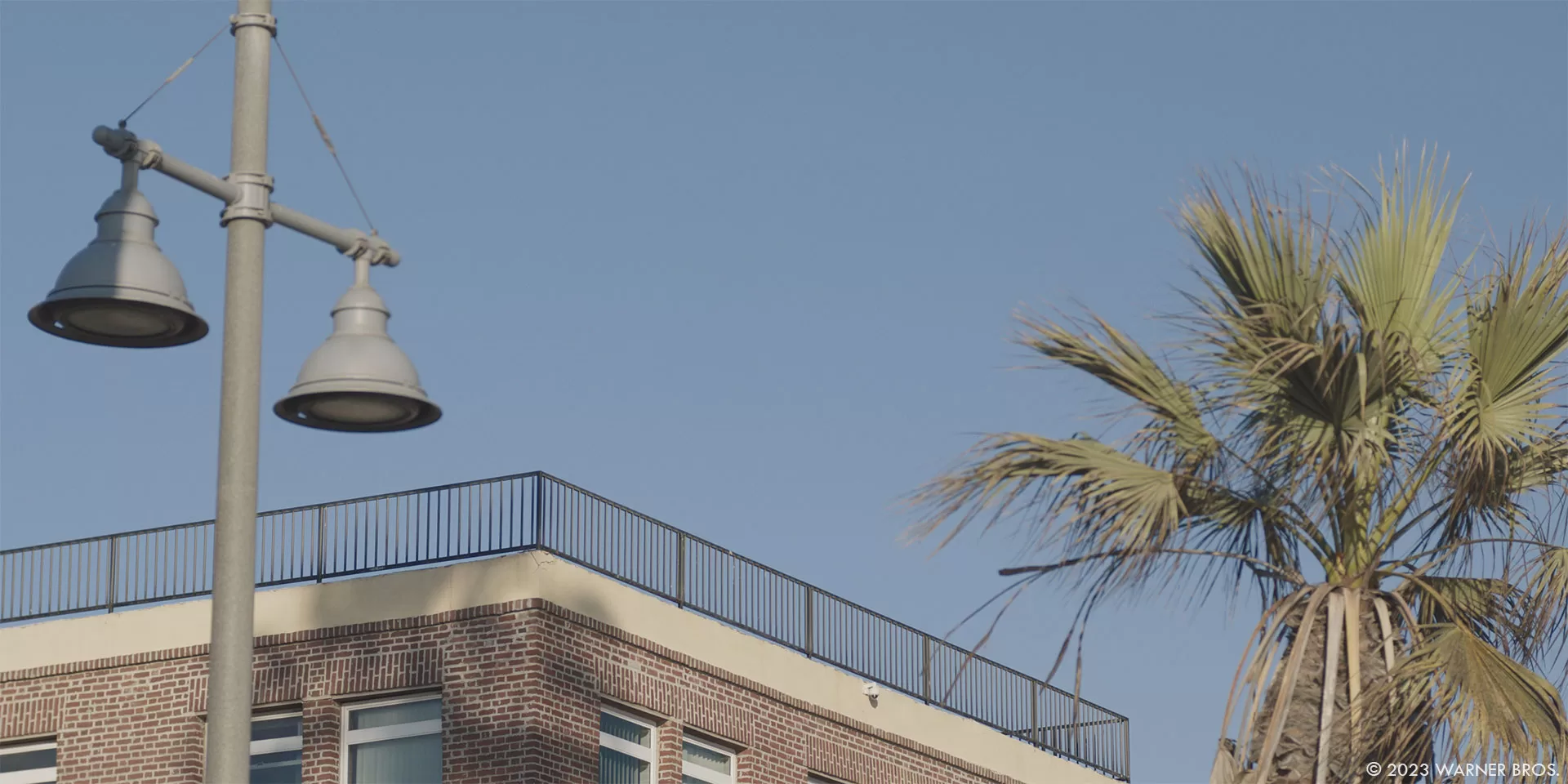

How was the collaboration with the Director Greta Gerwig and VFX Supervisor Glen Pratt?
I worked with Glen exclusively, and it was a rewarding experience. He had an extremely sharp eye for detail and cared about making the VFX for the movie as best as possible. I learned a lot and highly appreciated the opportunity to work with him.
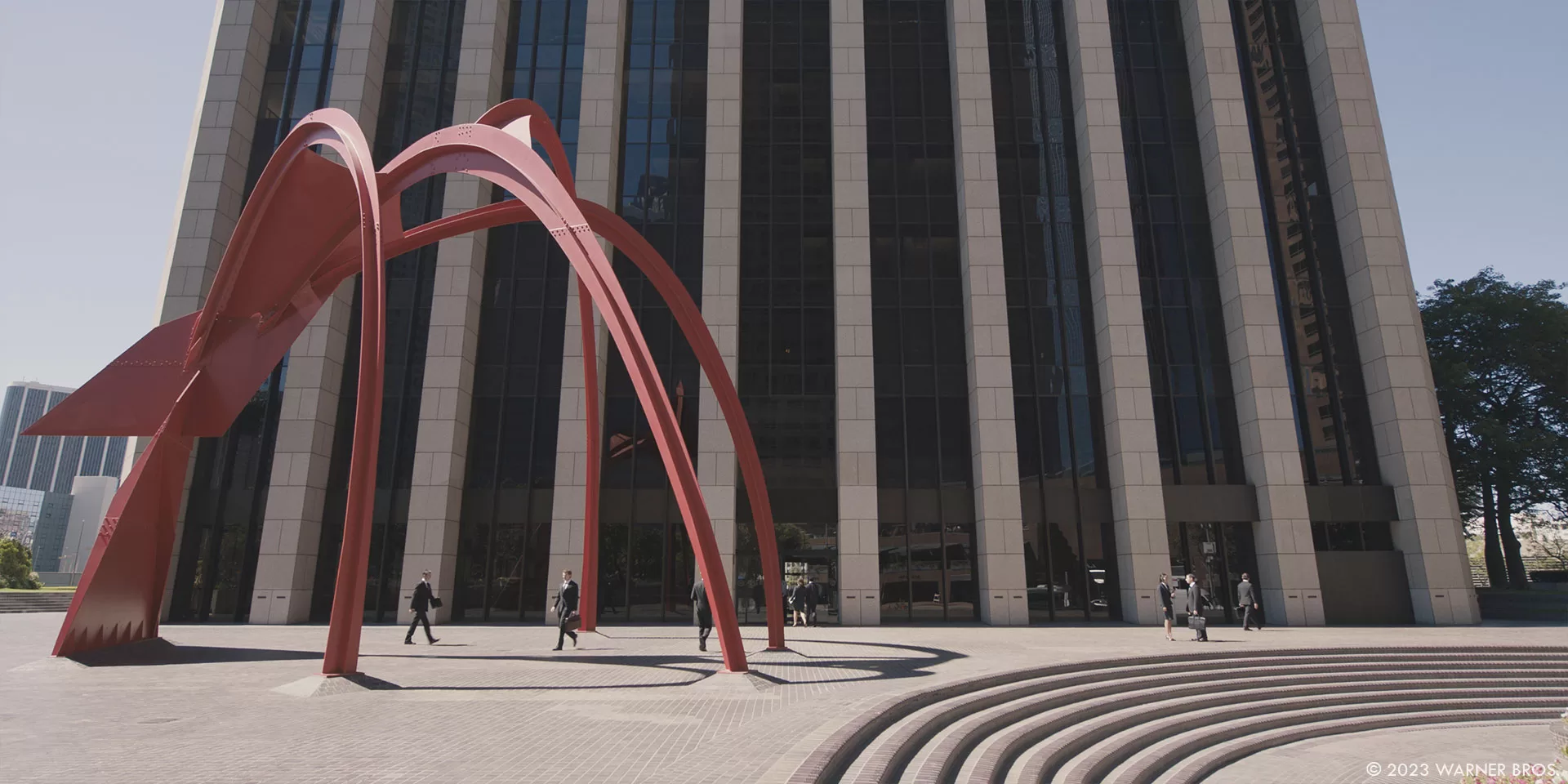
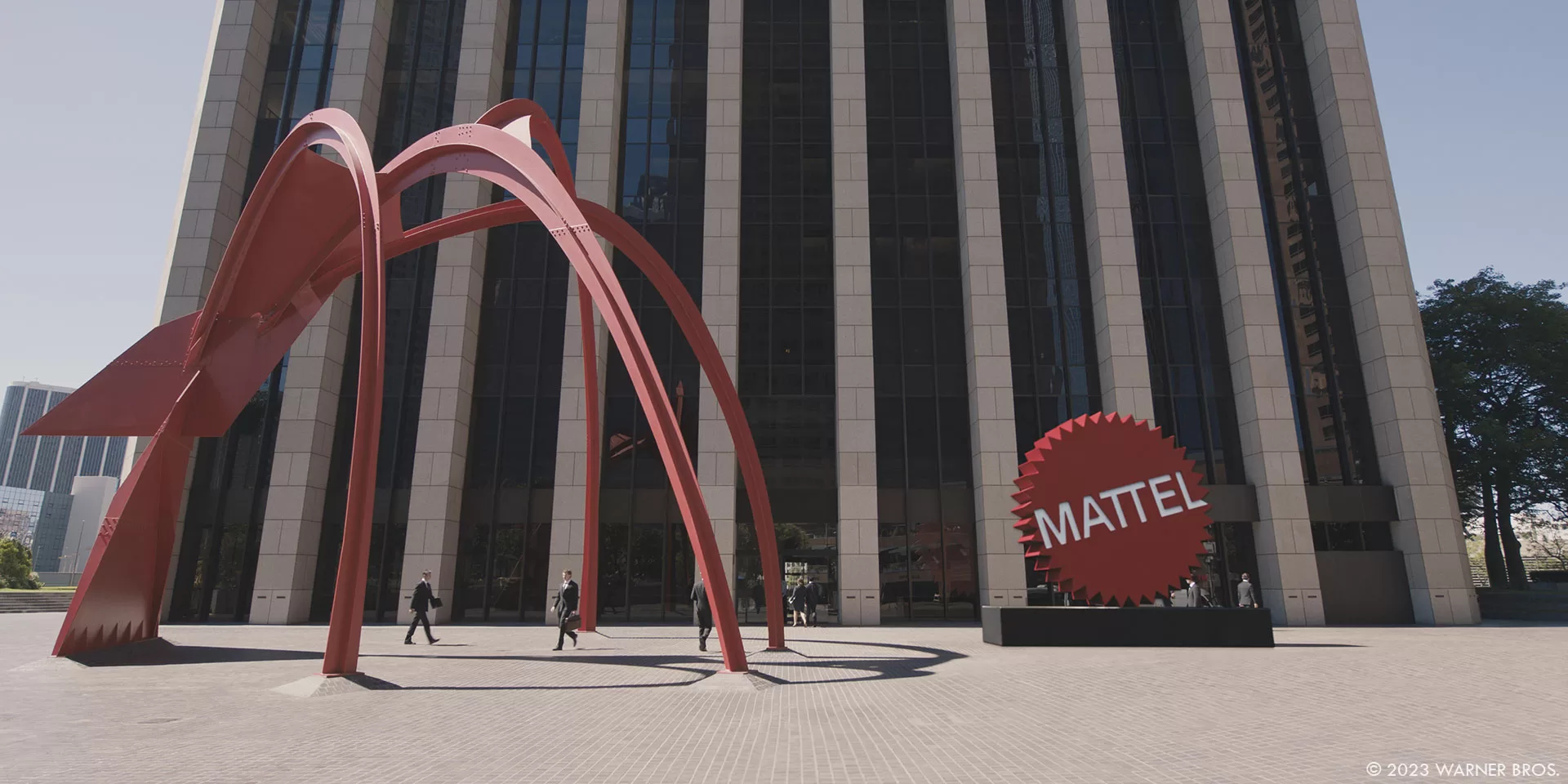
How did you organize the work your VFX Producer and split the work amongst the FuseFX offices?
My core team consisted of Anna Kelman as Producer, Kelsey Melnick as Associate Producer, John-Michael Buban as Compositing Supervisor, Kyle Anderson as CG Supervisor, and Oliver Bleich as Editor. Our work involved close to 50 artists, some contributing at different times.
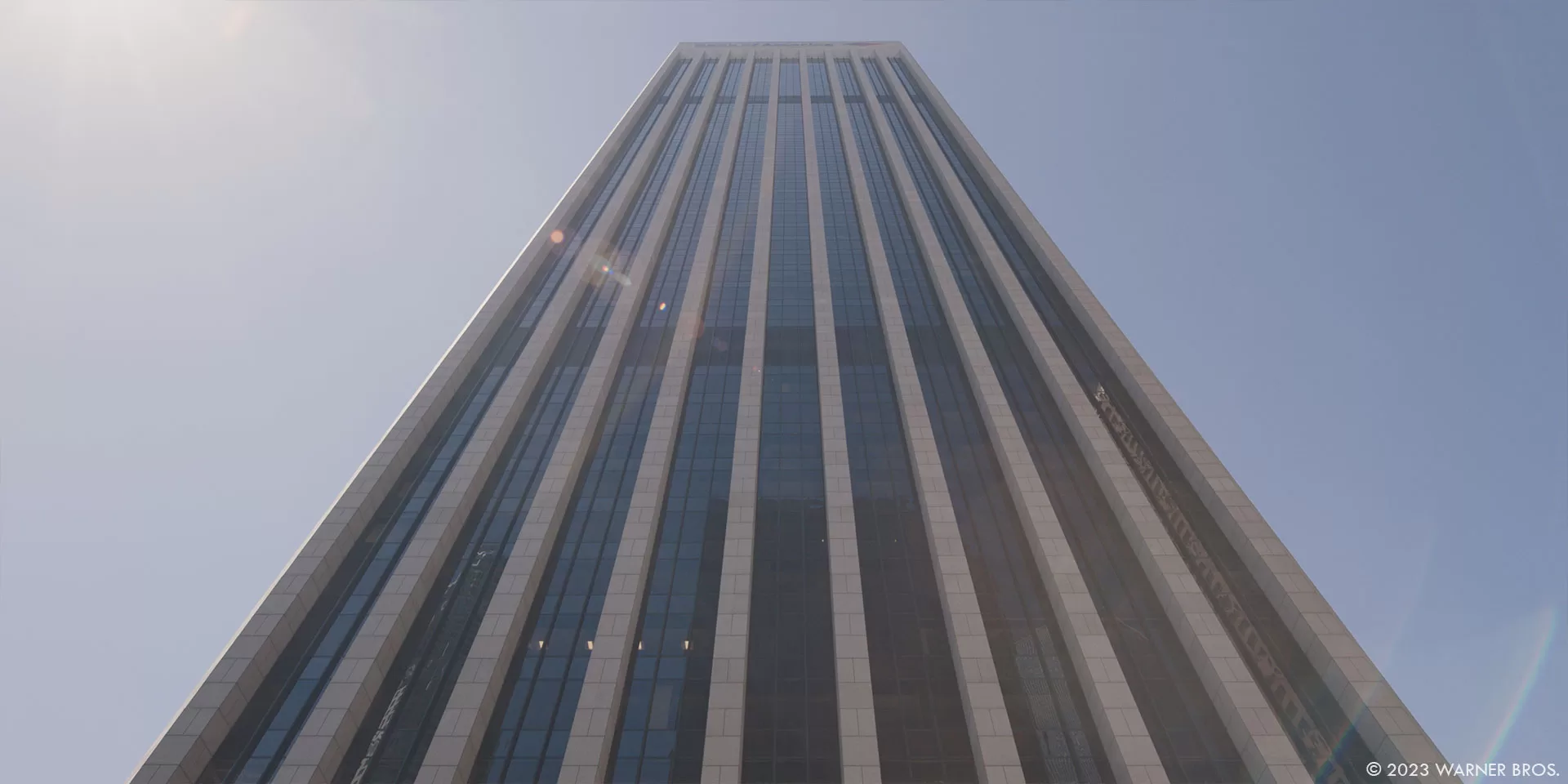
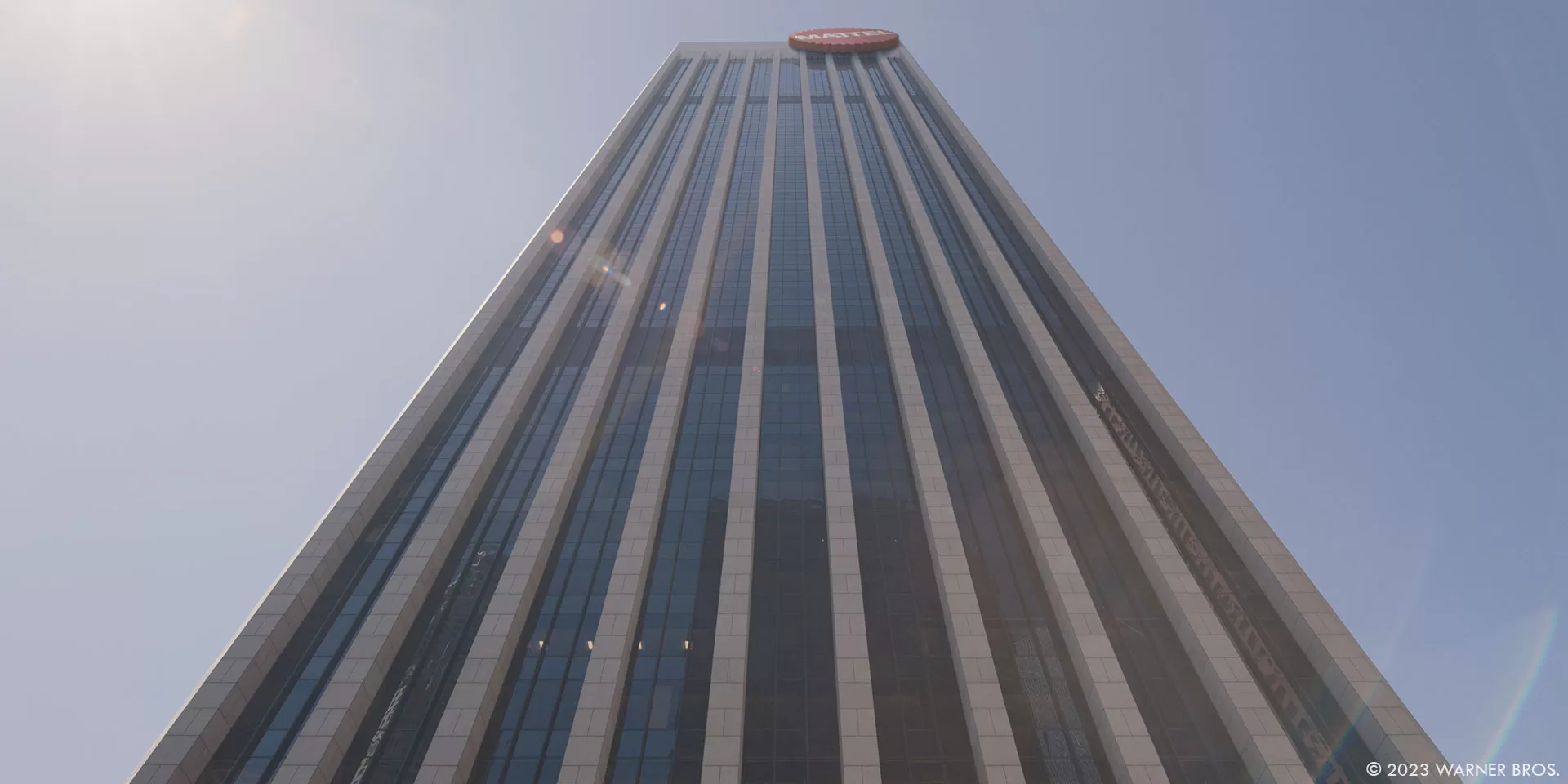
What are the sequences made by FuseFX?
We mainly worked on the shots of the « real world » of Los Angeles. The bulk of the work was the cubicle set extensions within the Mattel headquarters and the glass reflections at the top floor where the executives gathered in the boardroom. Our other tasks included some matte paintings, set clean-ups, crowd work, and bluescreens to enhance the storytelling of Barbie.
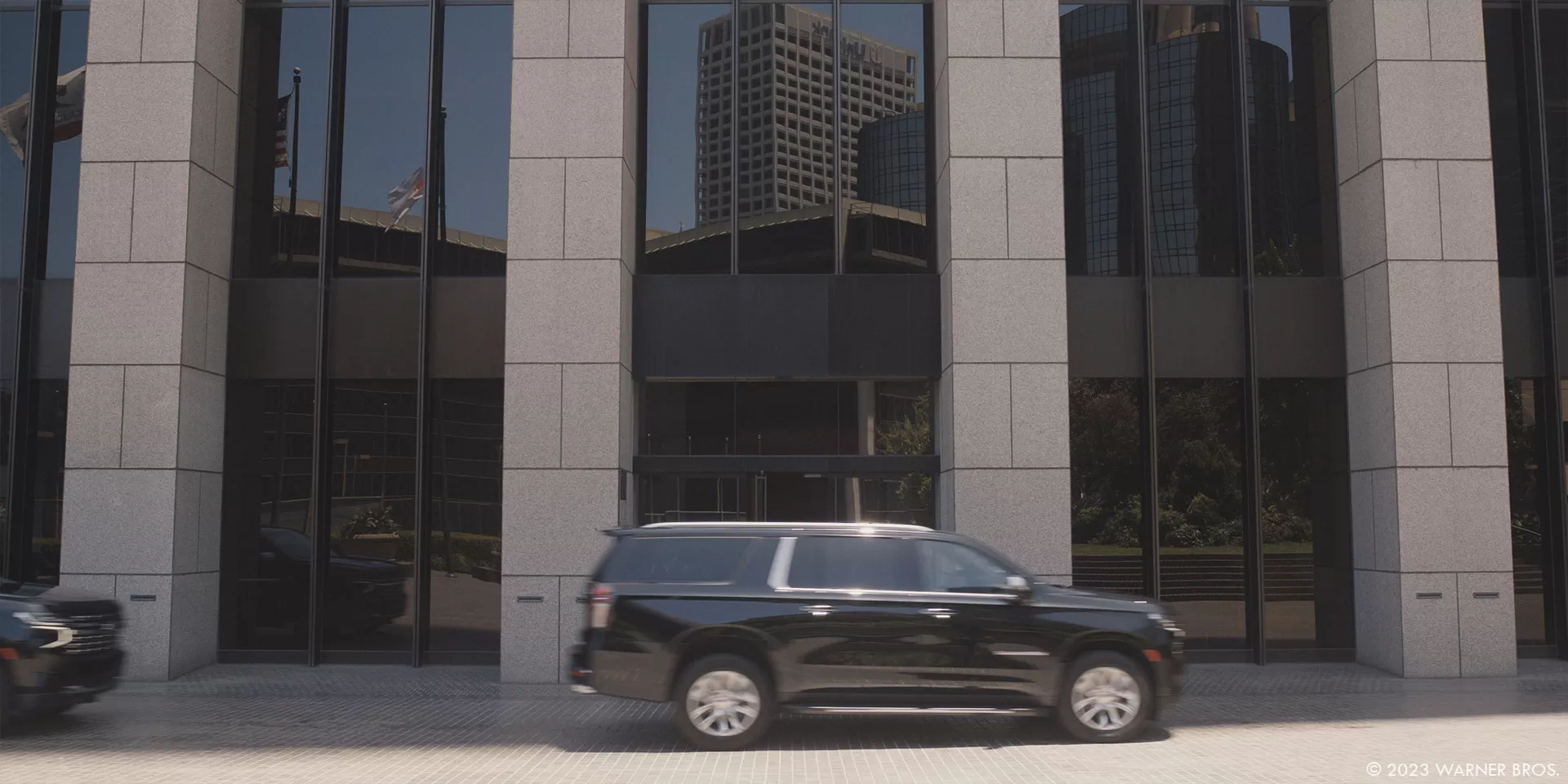
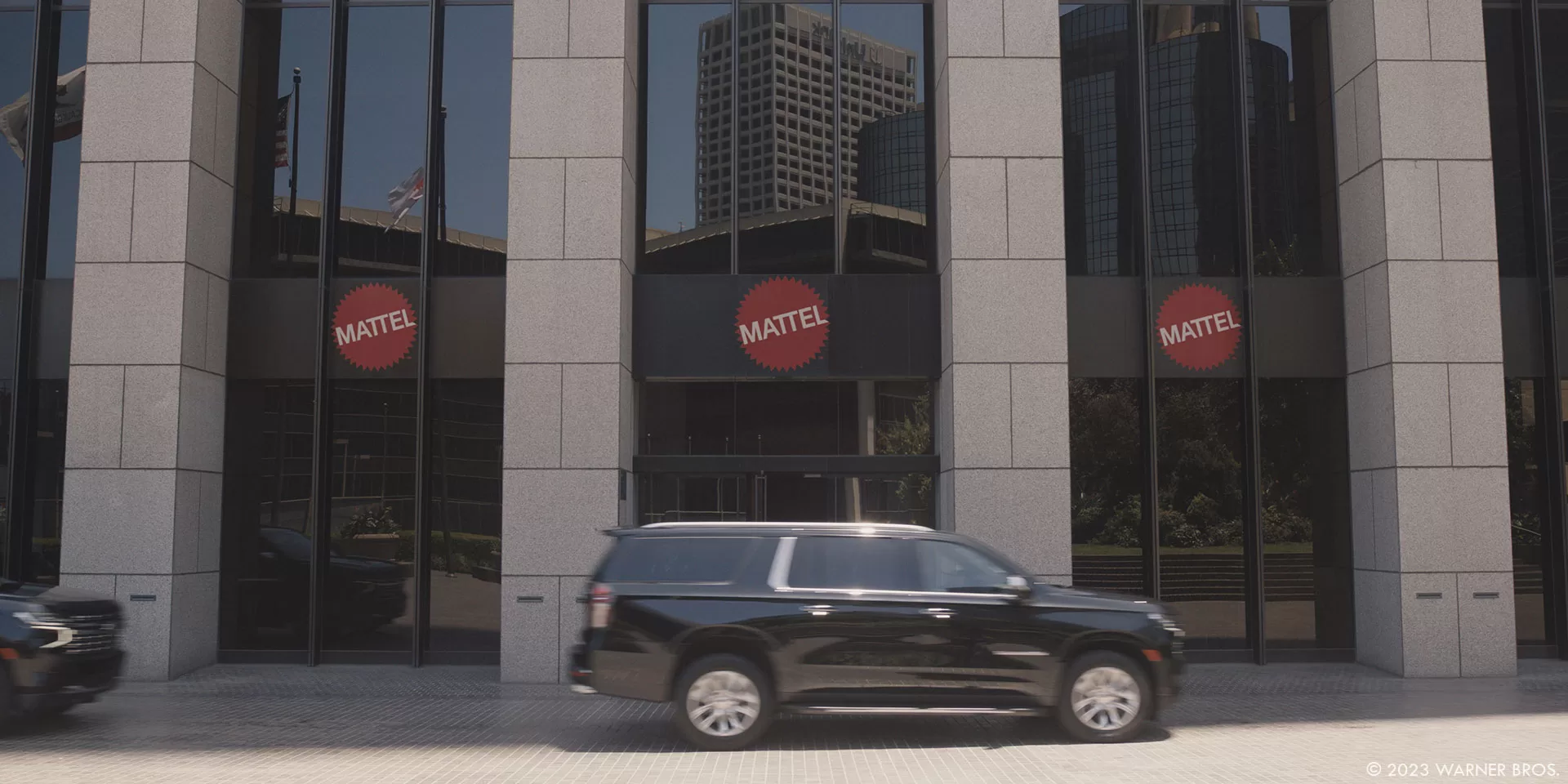
What was the real size of the sets?
The Mattel boardroom was quite a large room to replicate. The practical set was around 45′ wide and 65′ in-depth, and the downtown LA backdrop was around 27′ in height. I don’t have the specific dimensions of the room that the Mattel cubicles were in, but there were around 16 practical cubicles, and we did our CG extensions around them.
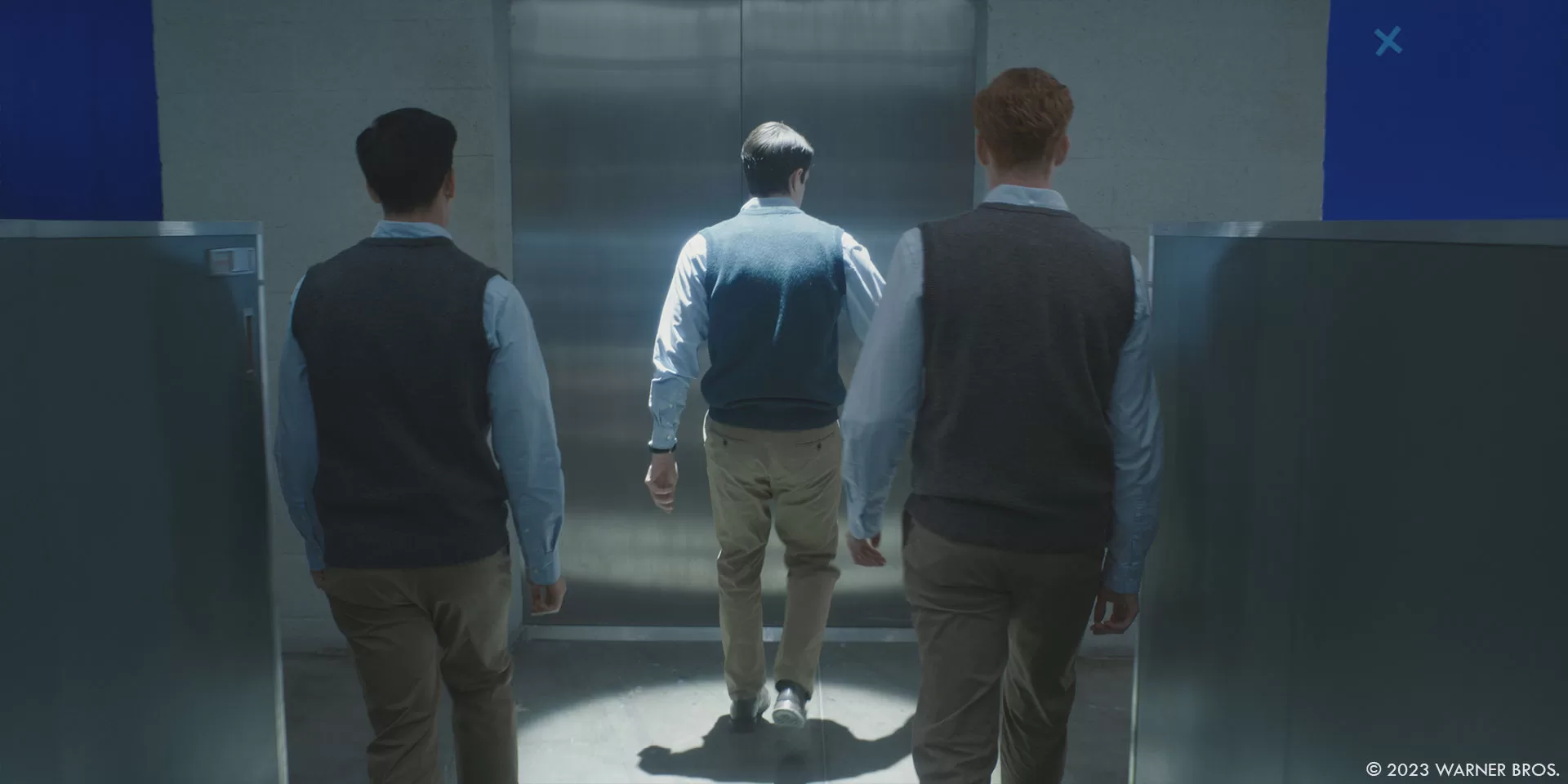
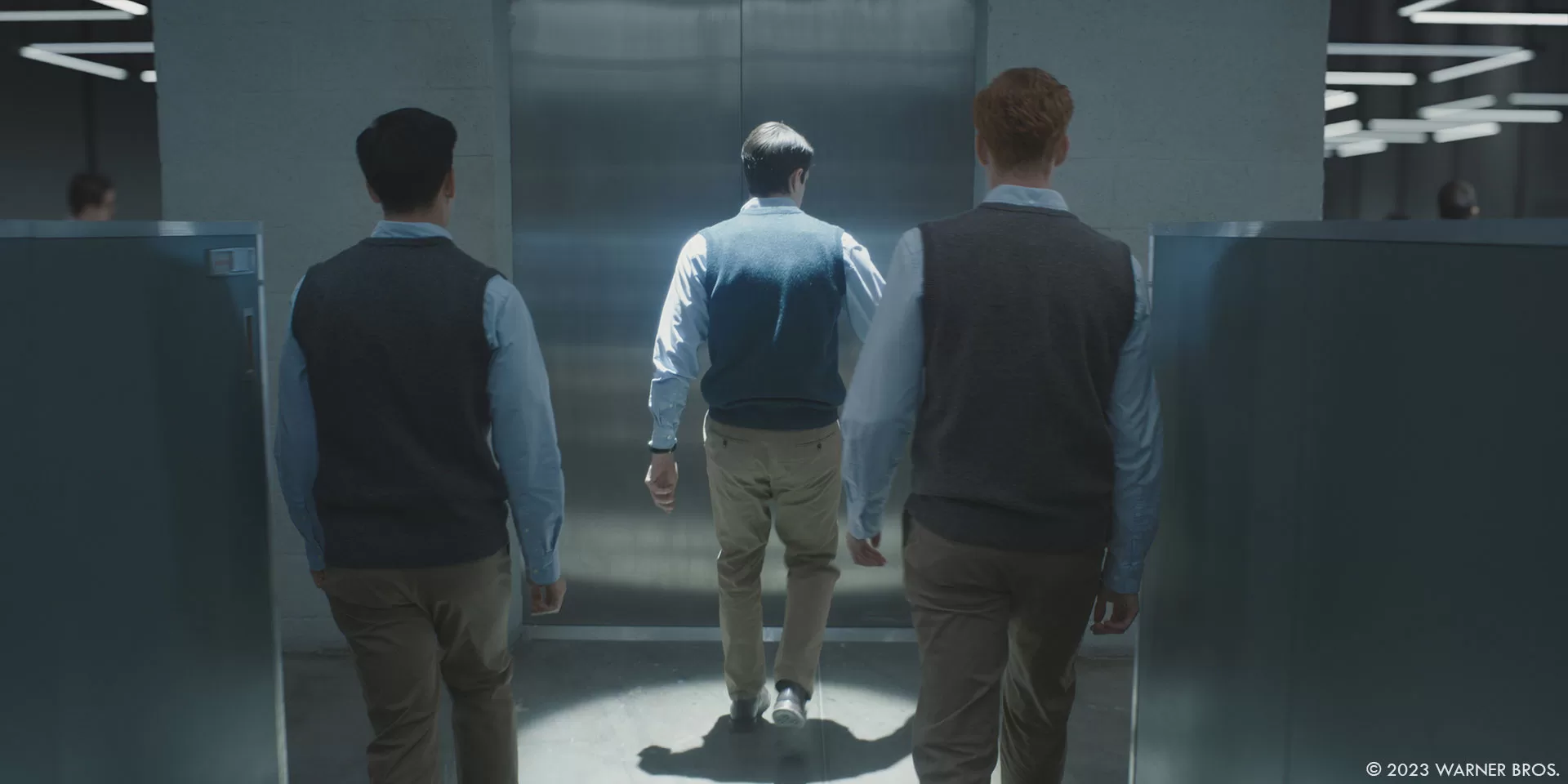
How did you handle the glass reflections?
Since no practical glass was on the Mattel boardroom set, we were tasked to create subtle CG glass reflections. We rebuilt most of the set in CG based on the lidar scans to get the spatial details as accurately as possible. The whole room was shiny, so on top of the primary reflections composited onto the windows, we added secondary and tertiary reflections onto the floor and table for added realism.
How did you create the endless corporate office environment?
We used the lidar scans provided by Clear Angle Studios to build the CG cubicle models. The models were then placed in the same layout as the 16 practical cubicles, and it ended up being around 150 CG cubicles that we created along with the extended CG walls and ceiling. There was a separate shoot for the additional office workers, and we used those plates to populate the extended CG areas with people. For the final look, we comped the environment to fade to black to reach the desired bleak tone.
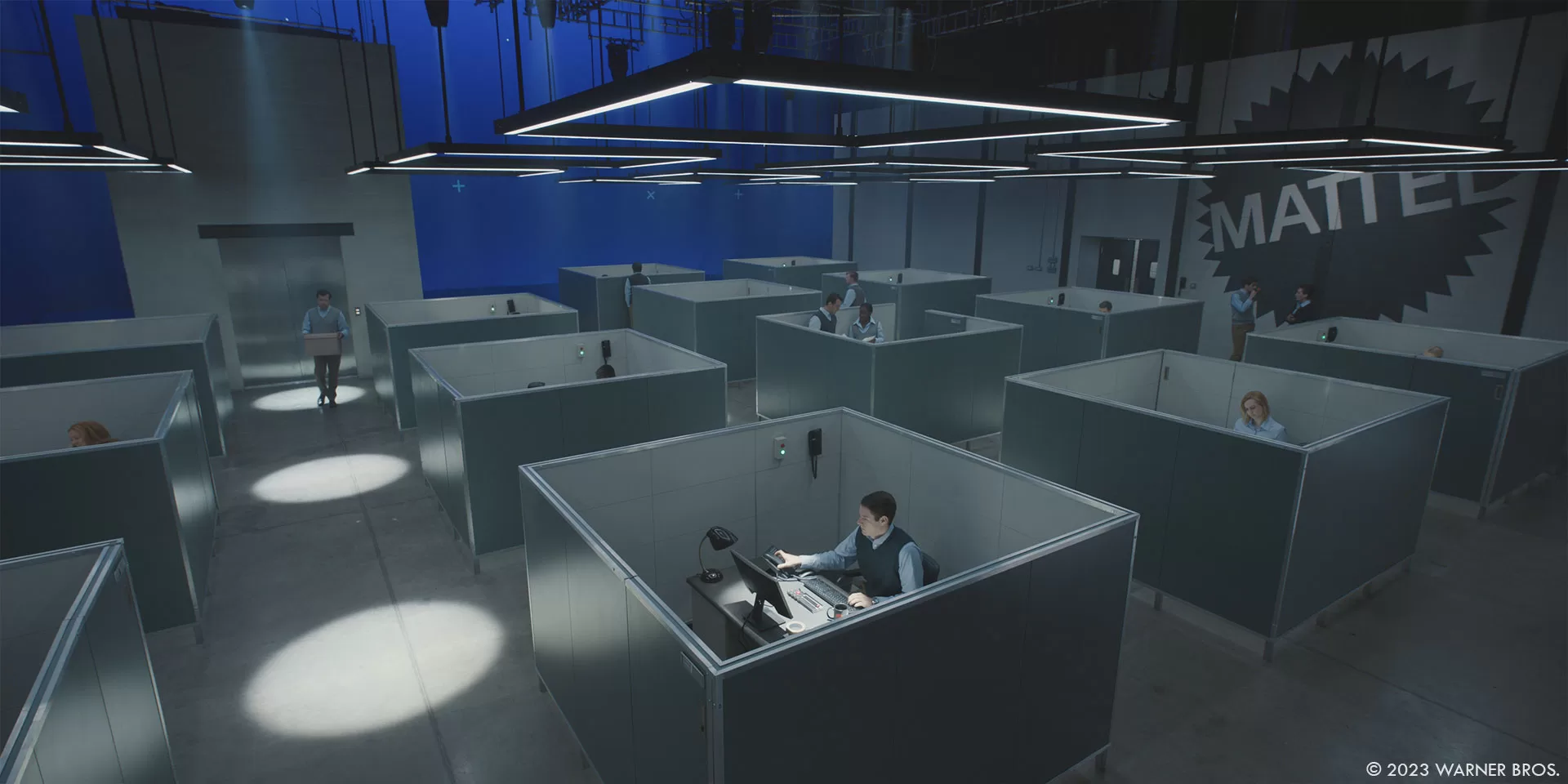
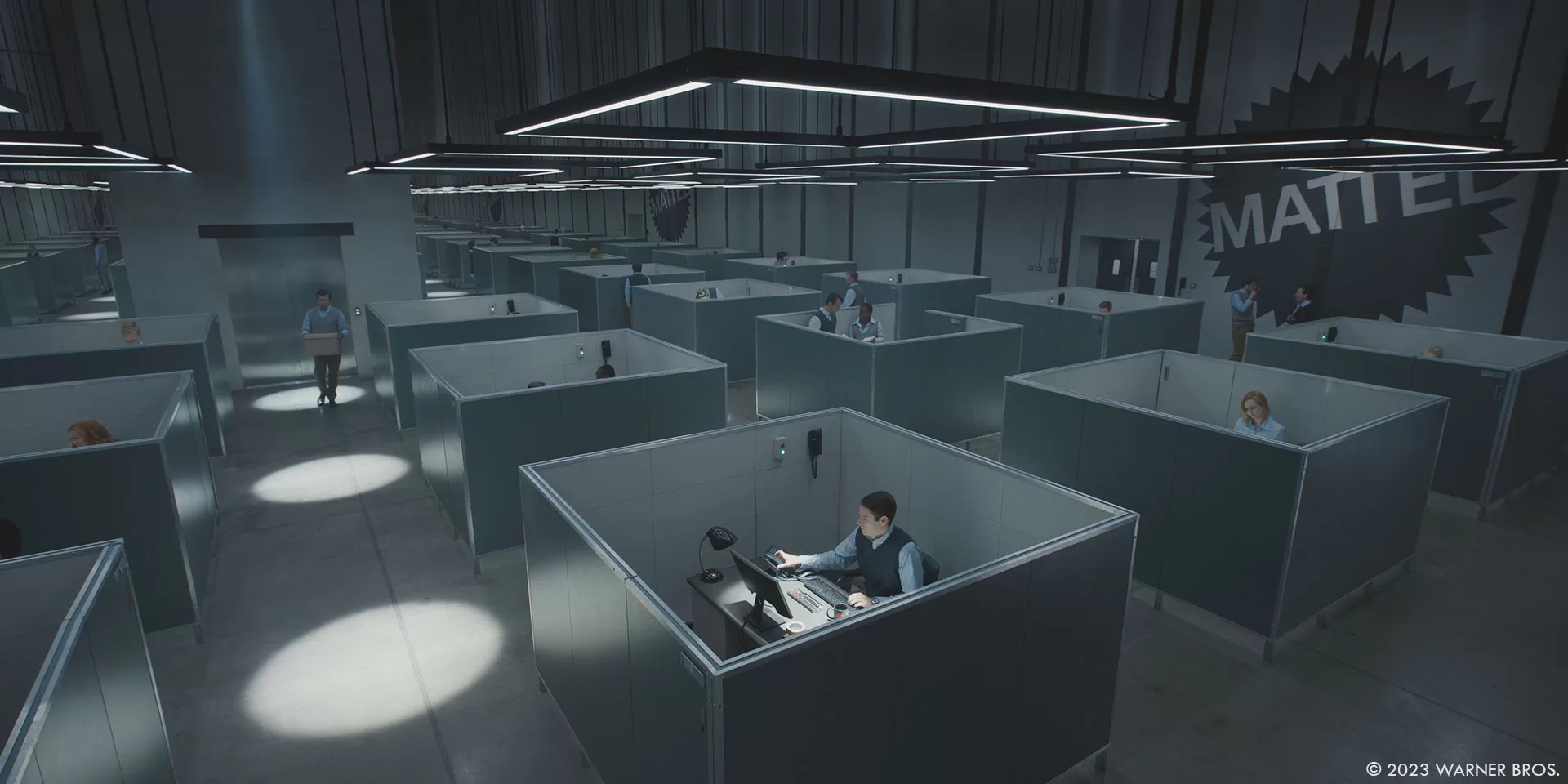
Can you elaborate about your matte paintings work?
We created a matte painting of the Mattel headquarters building as part of the downtown LA skyline. We also did some matte paintings for the Supreme Court scene, which extended the curtained walls than they were on set.
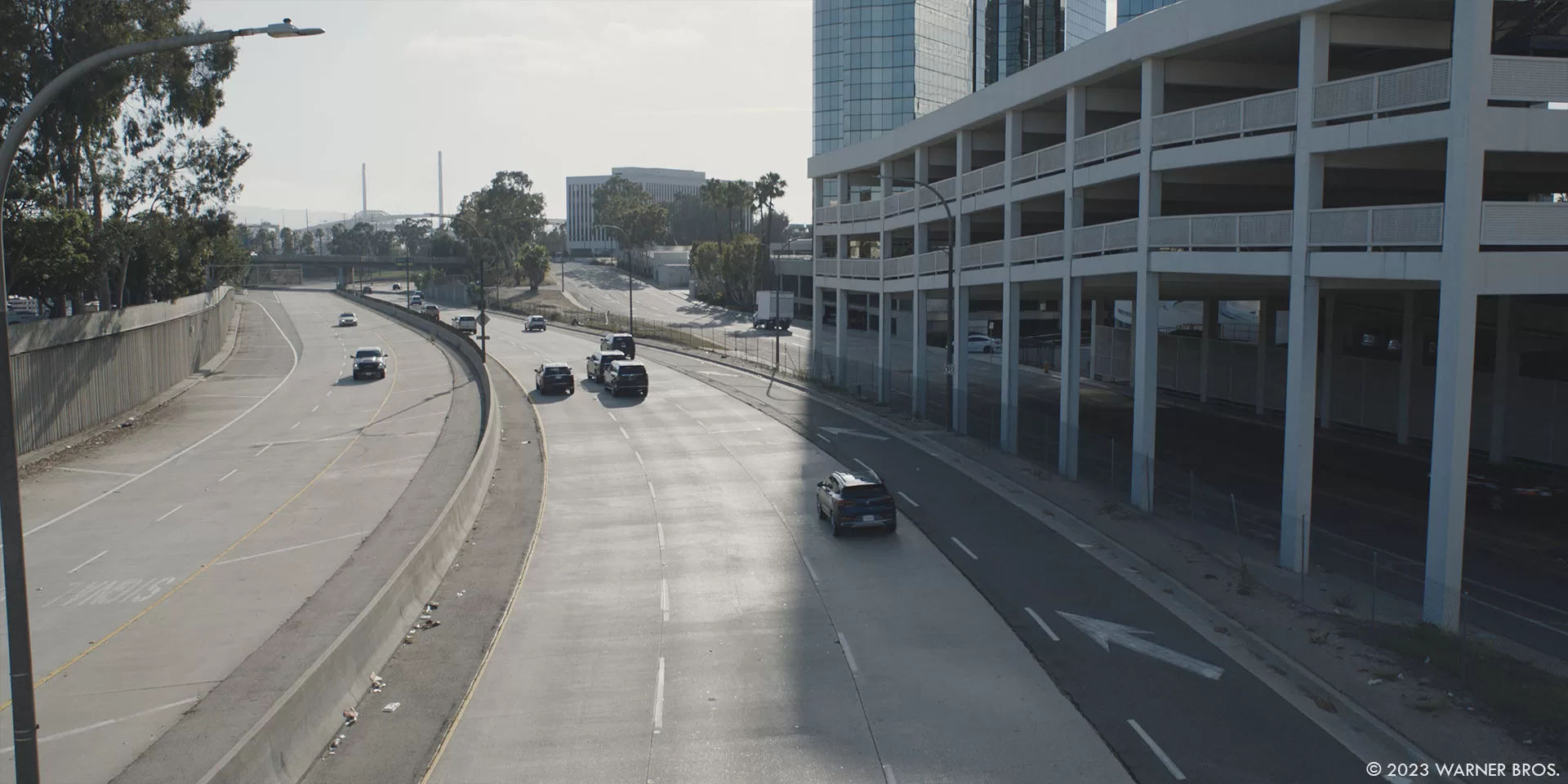
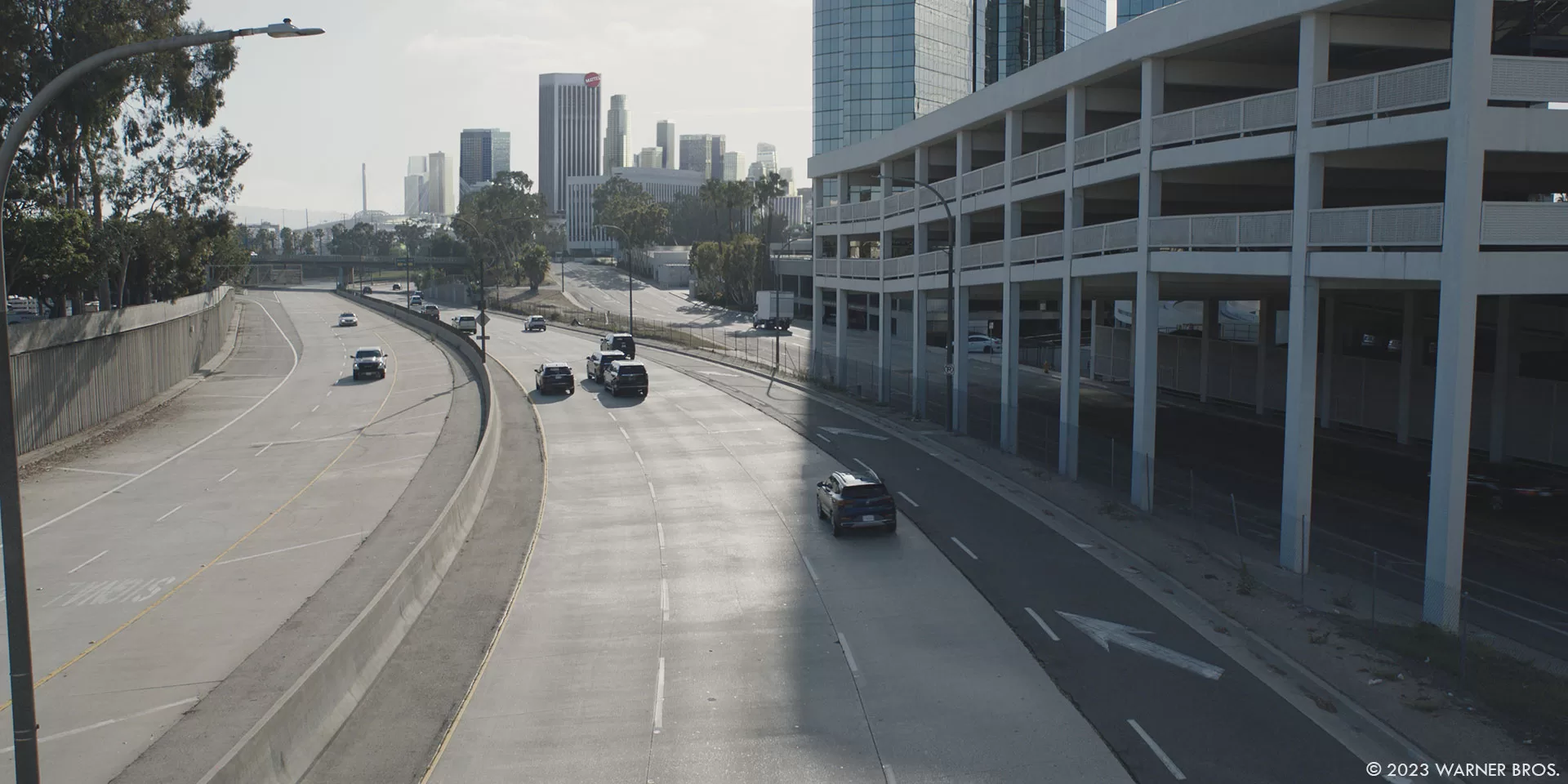
How did you create the crowd?
The crowd work was done for the Mattel cubicle scenes and the Supreme Court scene, and there were specific shoots for them. From those plates, the office workers were extracted by roto, and we populated them in the extended CG areas. The Barbies were shot against bluescreen, so we keyed them and placed them all around the Supreme Court.
Which sequence or shot was the most challenging?
The CG glass and reflections for the Mattel boardroom scenes were the most challenging. When researching glass, we found reflections could vary widely depending on many factors: lighting, angle, type of glass, glass clarity, etc. We tested many looks for months, and ultimately, the final look was a combination of creative and technical interpretations of how the CG glass interacted with the practical boardroom environment. Our next challenge was applying the look to all 60 shots and keeping them consistent across the 25 unique angles.
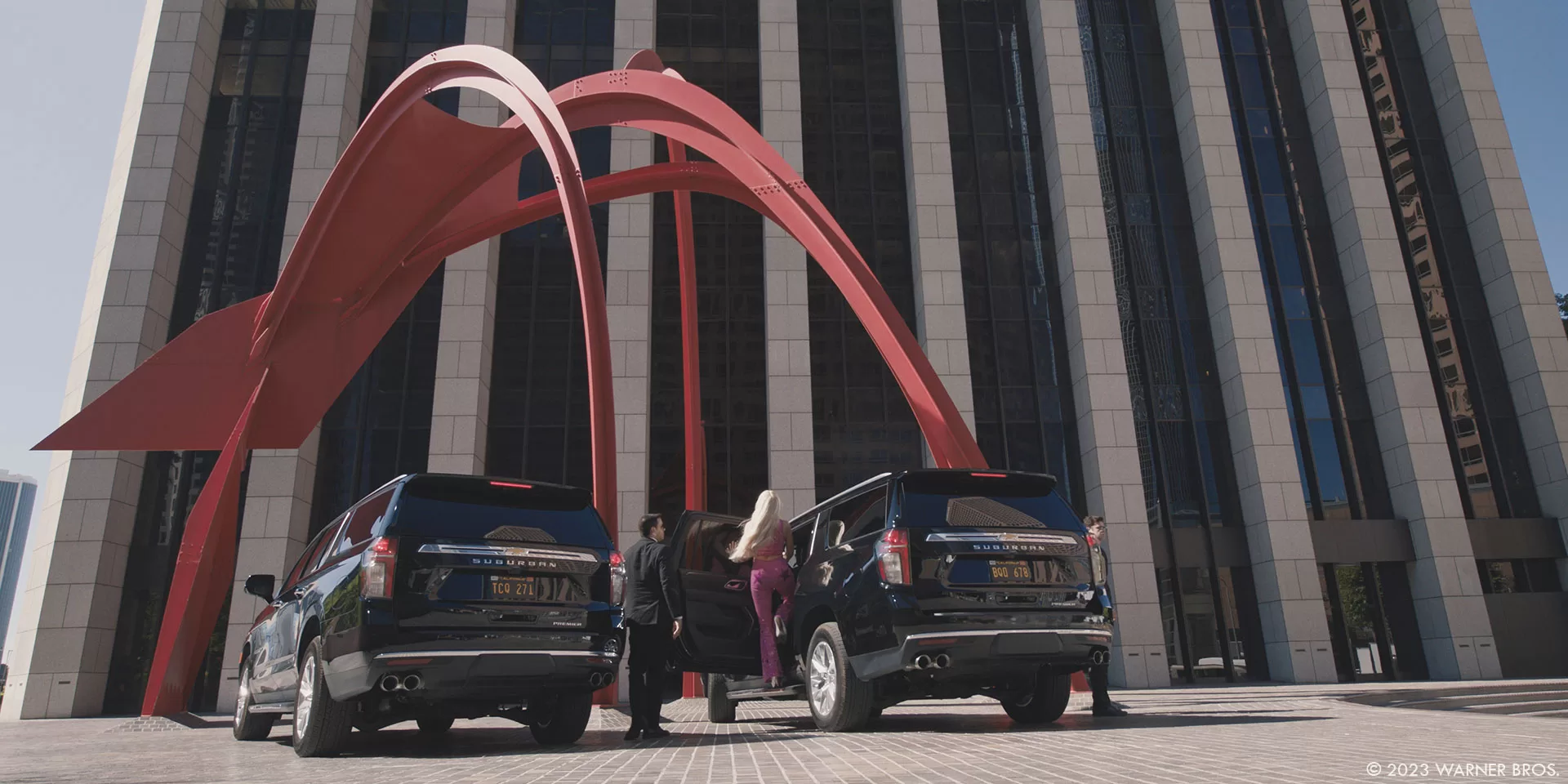
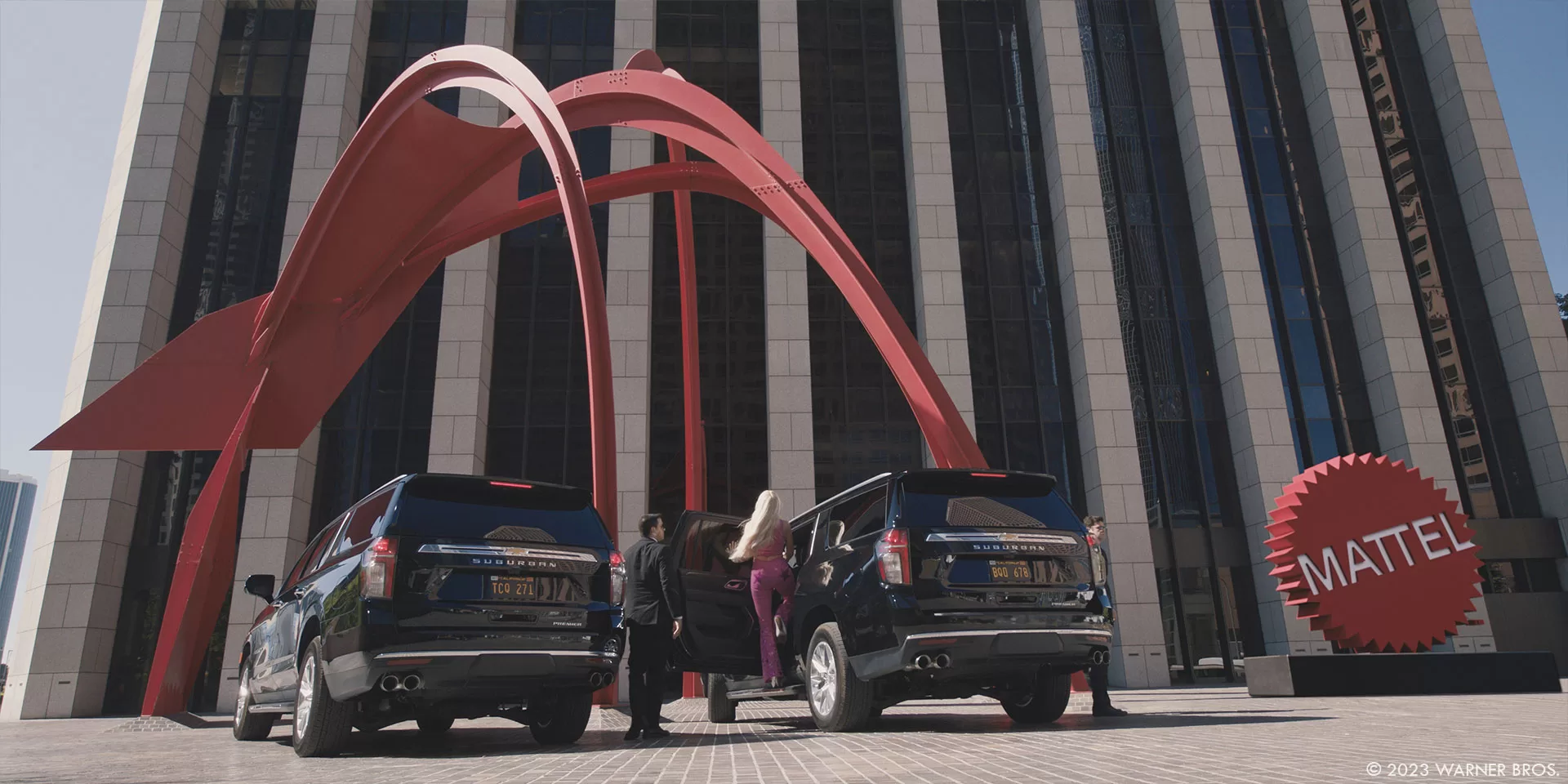
What is your favorite shot or sequence?
I have a couple of favorites. The Mattel cubicle sequences were very comical to watch when reviewing shots with Will Ferrell’s character and the other Mattel executives chasing down bright pink Barbie. I also enjoyed the Dancing Kens scene. Our work on it was mainly clean-ups and simple set extensions, but we knew this scene would be highly entertaining and should look flawless.
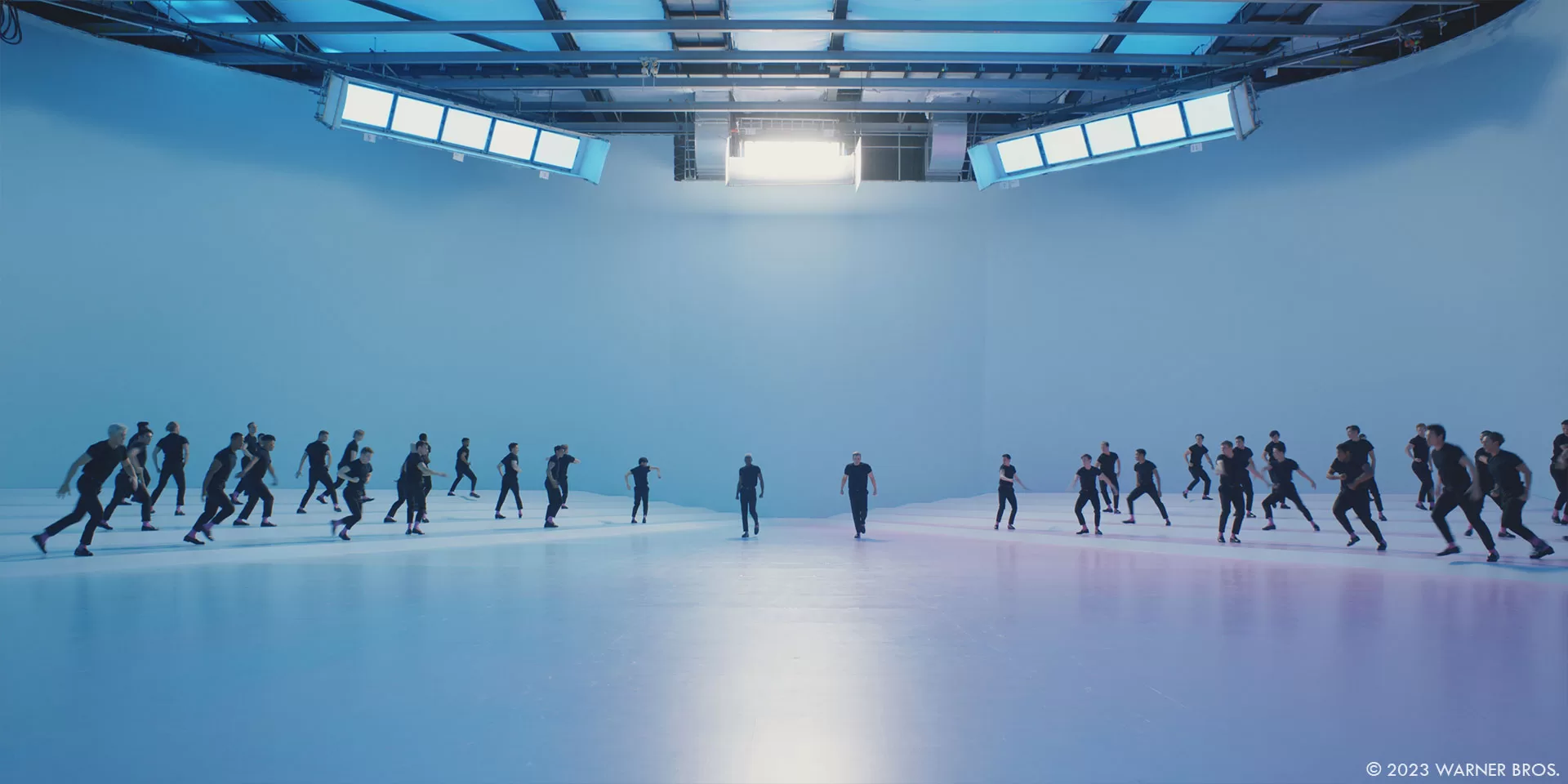
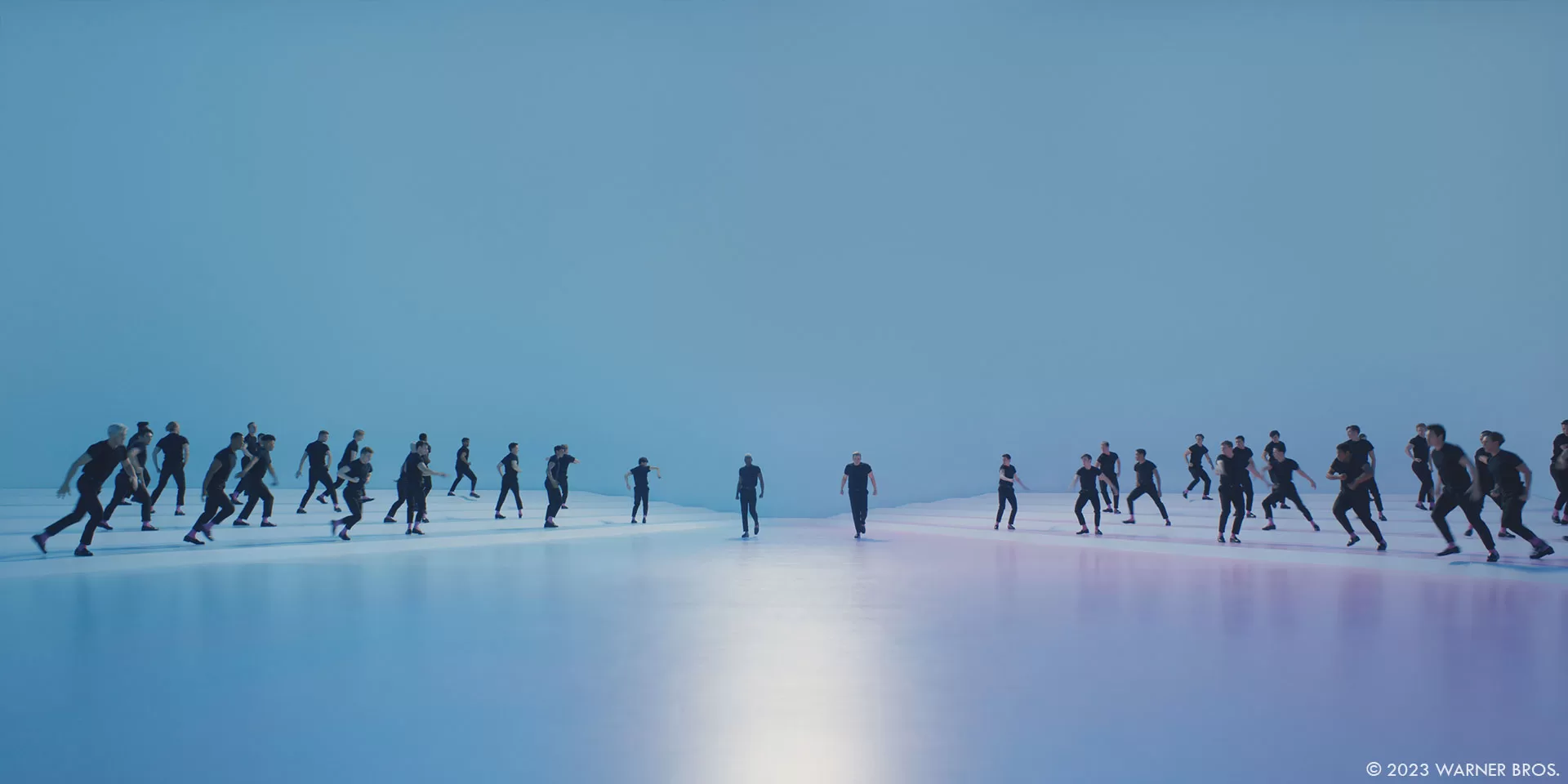
What is your best memory on this show?
Being on set, even briefly, was a great experience that I’ll remember. Also, the boardroom glass reflection shots were about 40% of our work on Barbie, so it was fitting to get Barbie compact mirrors as a wrap gift for my team, and their reactions were so positive that it was a great memory, too.
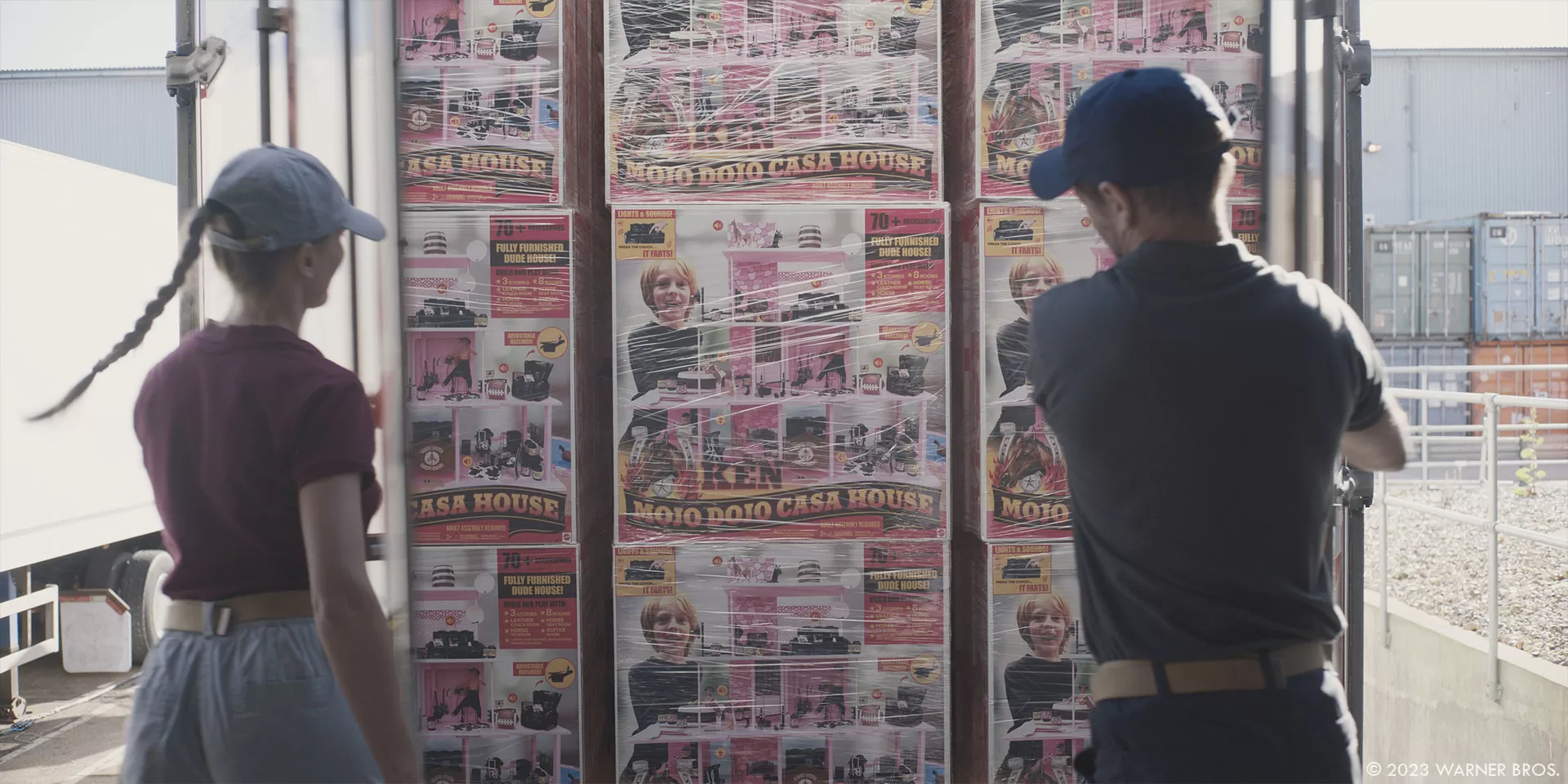
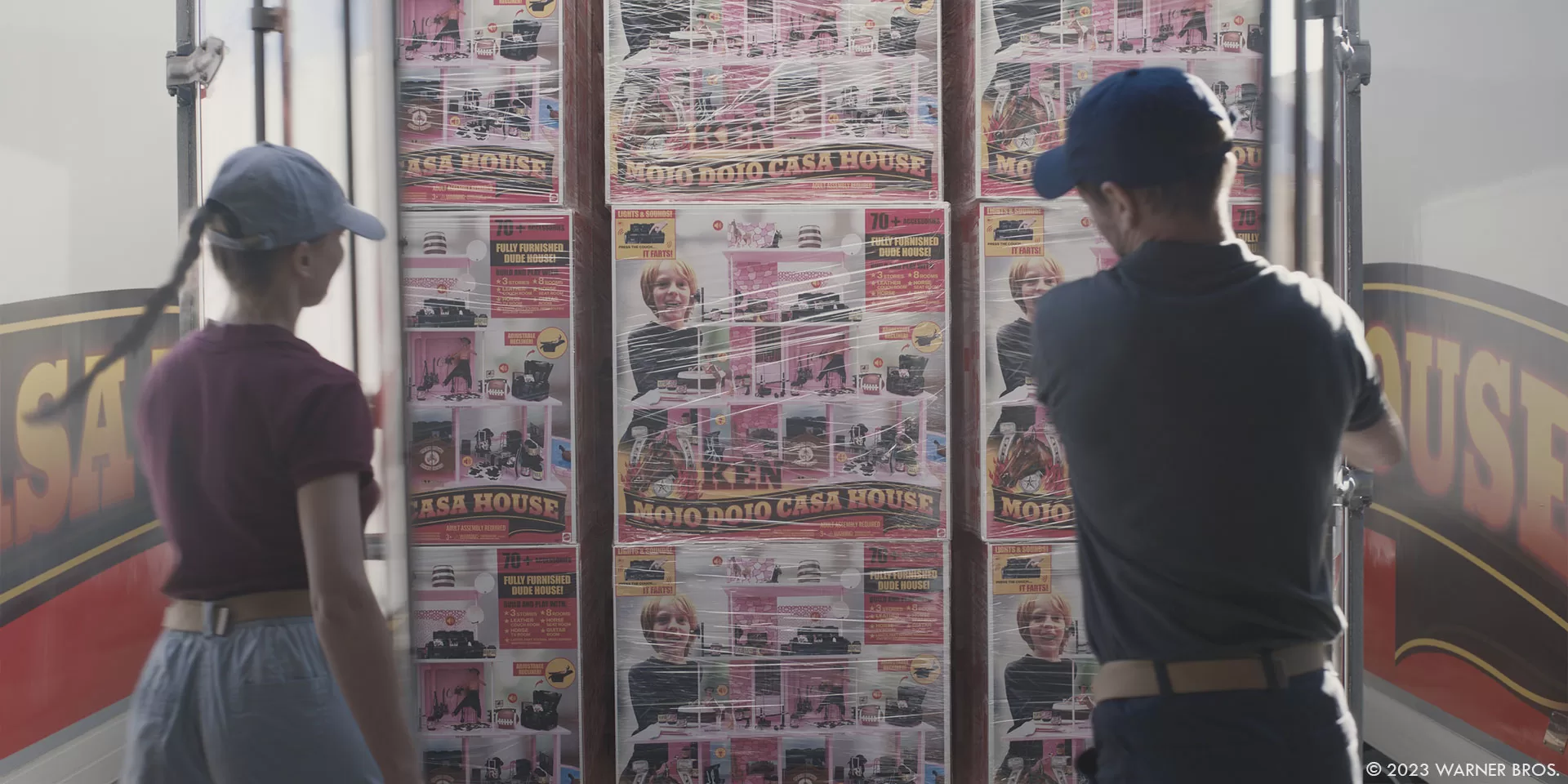
How long have you worked on this show?
Altogether, it was a little over a year. I read the script in June 2022 and flew out to LA briefly for some of the shoots. We started getting turnovers around September and finished shortly before the theatrical release in late July.
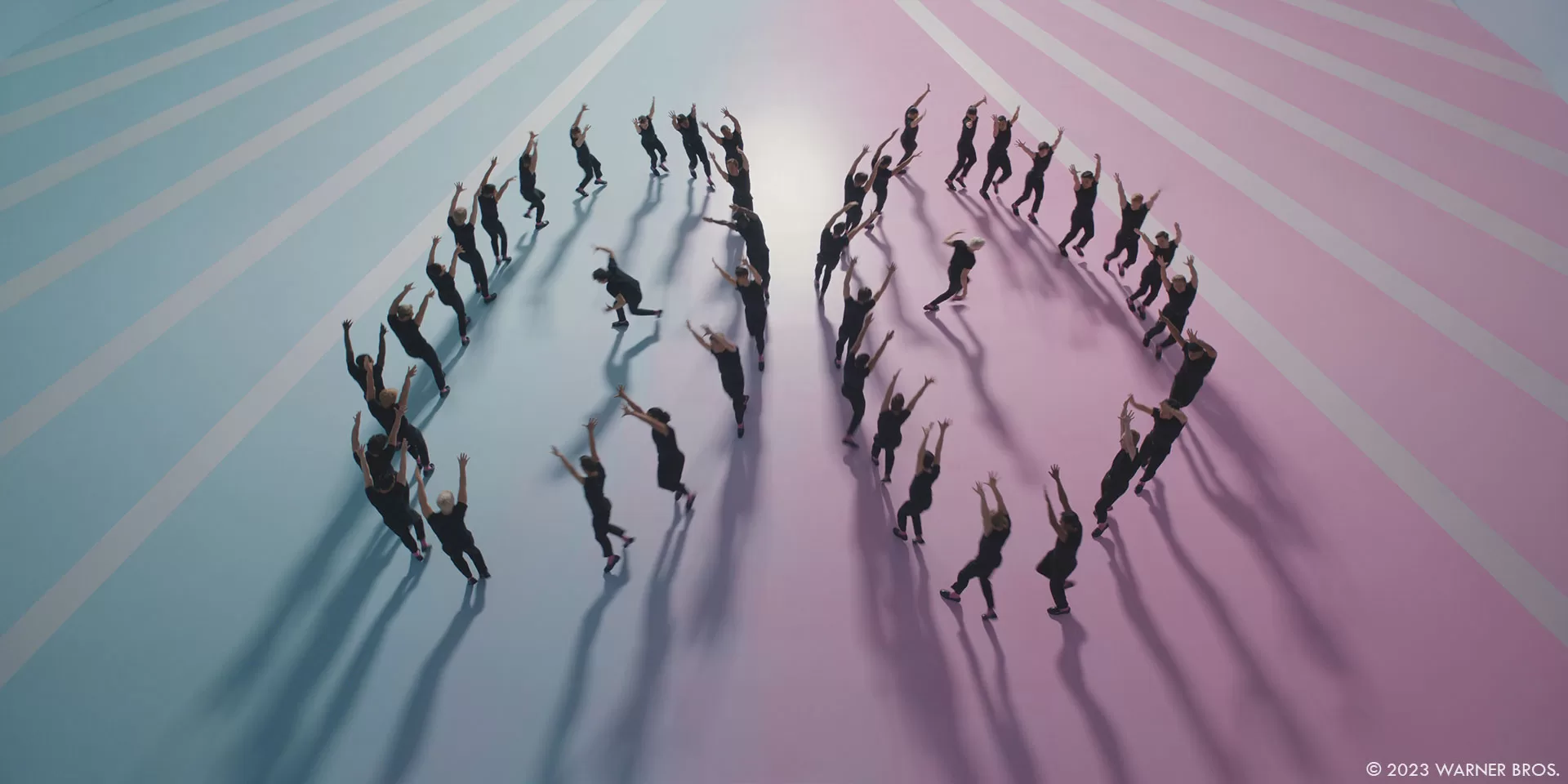
What’s the VFX shots count?
We worked on around 200 shots for the film.
What is your next project?
I recently changed roles within the FuseFX NY office, so now I’m the Head of 2D, and I’m learning a lot while enjoying this new role.
A big thanks for your time.
© Vincent Frei – The Art of VFX – 2024






